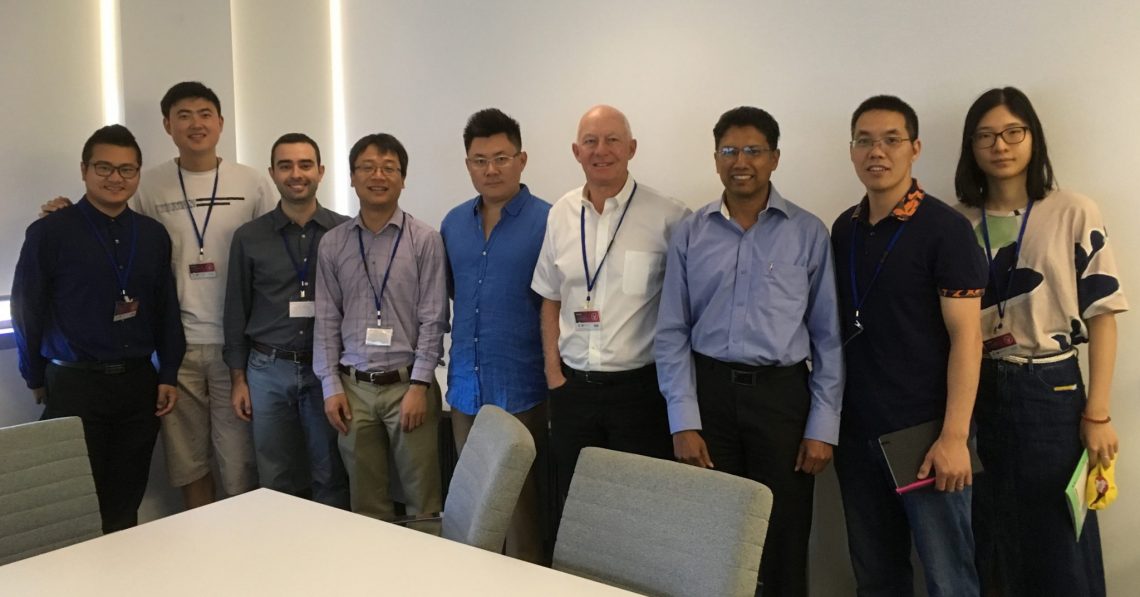In an economic downturn, it is of critical importance to ensure that asset management plans represent the reality of current conditions and the prediction of road performance fits the real behaviour of assets, so that loss of productivity due to mis-allocation of maintenance funds can be avoided.
A significant number of environmental protection measures have emerged over the past few years. The concept of sustainable development calls for a change in the way projects are appropriately managed. To support the integration of sustainable development, there is a need to include sustainability in the maintenance of infrastructure.
This project aims to develop an innovative and effective approach to integrating life-cycle cost, infrastructure performance and environmental considerations into infrastructure asset management to generate optimal maintenance plans.
This research will leverage off national exemplar projects through case studies to develop and test the sustainable asset management tool: Asset management – Great Eastern Highway Upgrade, WA. This project to design and construct the upgrade of the Great Eastern Highway between Kooyong Road and Tonkin Highway in Western Australia has been delivered by Main Roads WA, Leighton Contractors, GHD and NRW. It is a 4.2km section of the highway upgraded to six lanes with a central median strip, on-road cycling facilities and a continuous pedestrian path.
Objectives
- Improve the current life-cycle cost method used in infrastructure asset management to a life-cycle cost and benefit method, by including indirect costs, such as user costs and benefits. Mathematical modelling of two major environmental impacts, i.e. emissions and waste, will also be developed in this project.
- Develop a computerised application (validated in the dTIMS environment) to support optimal maintenance strategy selection based on the aforementioned modelling and a set of priorities on cost, performance and environmental considerations.
Industry Outcomes
This project will:
- Demonstrate how user-benefits and costs can be integrated into asset management to reveal the true life-cycle cost of asset management plans.
- Demonstrate how environmental impacts can be integrated into the decision making process when selecting maintenance strategies.
- Provide a practical framework and computerised tool to select optimal maintenance strategies based on life-cycle cost, performance and environmental considerations.
Documents for Downloading
The following documents provide additional detail regarding this current research, including project outcomes to date:
Industry Report
Sustainable Asset Management: Selecting optimal maintenance strategies based on multi-criteria decision making – Industry Report (November 2017, 3Mb)
Academic Publications
Sustainable Asset Management – Selecting Optimal Maintenance Strategies Based on Multi-criteria Decision Making – A Research Agenda, Wu, P and Wang, X, Australasian Universities Building Education Association (AUBEA) Conference 2016, 6-8 July 2016, Cairns, Australia.
A Critical Review of the Factors Affecting the Success of Using Lean to Achieve Green Benefits In: Proc. 24th Ann. Conf. of the Int’l. Group for Lean Construction, 20-22 July 2016, Boston, MA, USA, sect.10 pp. 33–42.
Research Reports
Developing a total building maintenance framework through benchmarking (January 2017, 1Mb)
Presentations
Industry Presentation: Selecting optimal maintenance strategies based on multi-criteria decision making, Sept 2016, Main Roads WA
Industry Presentation: Building maintenance and performance evaluation, Nov 2016, Qld Department of Housing and Public Works
Discussion Papers and Reports
Emissions Modelling of Maintenance Strategies (January 2017, 500Kb)
Integrating Road User Cost into Decision Making Process of Road Maintenance (February 2017, 500Kb)
Australian Research Council (ARC) Linkage Project
This research has been successful in leveraging into ARC Linkage project. The project is funded partially by the Australian Government through the Australian Research Council.
—-
Bridge performance assessment through advanced sensing and modelling (LP160100528)
January 2017 – December 2019
Presentations

Ian Smith, Professor of Structural Engineering, School of Architecture, Civil and Environmental Engineering (ENAC) at École Polytechnique Fédérale de Lausanne visited Curtin University’s BIM Centre in January 2019 with PhD student Marco Proverbio. Marco gave a talk at Main Roads WA on his analysis of the Rockingham Bridge 1223, comparing model predictions with sensor measurements.
Academic Presentations
Gunawardena, Y. Aslani, F. and Li, J. (2017). Exploratory investigation of monitoring data obtained from an in-service prestressed concrete bridge incorporating a distinct half-joint layout. The 8th International Conference on Structural Health Monitoring of Intelligent Infrastructure (SHMII8), Brisbane, December 2017
Shi, W., Wu, Changzhi and Wang, X. (2018). A Prototype Tool of Optimal Wireless Sensor Placement for Structural Health Monitoring. In: Smith I., Domer B. (eds) Advanced Computing Strategies for Engineering. EG-ICE 2018. Lecture Notes in Computer Science, vol 10864. Springer, Cham.
Zhu, J, Wang, P. and Wang, X. (2018). An Assessment of Paths for Transforming IFC to Shapefile for Integration of BIM and GIS. 26th International Conference on Geoinformatics, China, June 2018




